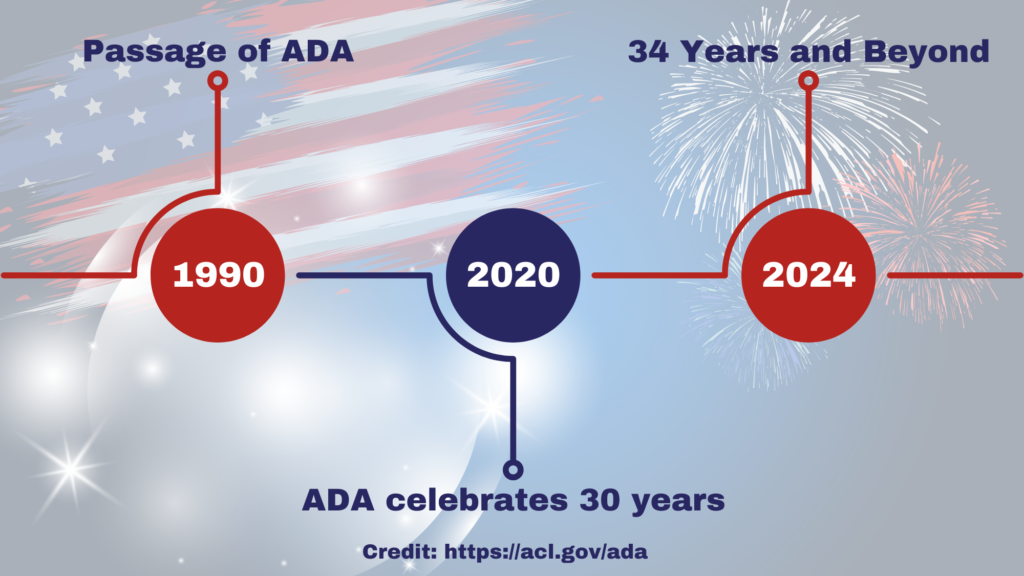History of the American with Disabilities Act (ADA)
Curbed sidewalks, automatic door openers, elevators, accessible bathrooms and parking spaces are all considered quite normal today. However, it took several decades of disability rights activism for the American Disabilities Act (ADA) to become the law of the land.
Let’s take a walk down memory lane to see where it all began.
1973: 504 Sit In
The 1980s saw renewed attention to the state of individuals with disabilities in America. Efforts by Disability Rights Activist Judith Heumann and Disability & Civil Rights Champion Brad Lomax led to the historic 504 Sit-In in San Francisco. As a result, the Rehabilitation Act of 1973 was finally put into effect. The purpose of the Rehabilitation Act was to end discrimination against persons with a disability for any program being funded with federal funds.
1988: ADA First Introduced
With this momentum, the American Disabilities Act (ADA) was formally introduced into Congress in 1988.
1990: ADA Becomes Law
It would take another 2 years for the ADA to become the law of the land. The Administration for Community Living described the passage of the ADA as:
“This landmark civil rights law affirmed the inherent dignity of every person, regardless of disability.”
1999 – 2020: ADA Adoption
The next 20 years saw widespread adoption of inclusive practices and revised building codes that helped to improve the lives of individuals with disabilities. In so doing, all Americans stood to benefit from the sweeping changes in how buildings and public spaces were being designed.
We’ve spoken about automatic door openers and accessible curbs in previous posts. All of these advancements in how inclusive society has become to individuals with disabilities came as a direct result of the passage of the ADA.
ADA in the Digital Age
The dawn of the digital age has brought a new wave of challenges for individuals with disabilities. In this digital age, the world has switched from brick-and-mortar stores to e-commerce platforms, newspapers to consuming content digitally, in-person doctor’s visits to telemedicine, and from writing letters to connecting with friends and family over social media.
The digital age has brought a level of connectedness that wasn’t possible before. However, as a society we haven’t been intentional about making the digital landscape as accessible as we’ve had to do with the physical landscape, with the passage of the ADA.
The Administration for Community Living shares many best practices when it comes to making digital content and platforms more accessible to individuals with disabilities.
One of these best practices includes closed captions. Although today’s streaming services come standard with closed captions, it came about as a result of decades of work to improve accessibility to persons with low vision or who were blind. You can learn more about the history of closed captions here.
ADA Forward
As we look up to the sky filled with fireworks for July 4th Independence Day celebrations, let’s not forget to look back at the decades of work that made independence a reality for individuals with disabilities in this country.

